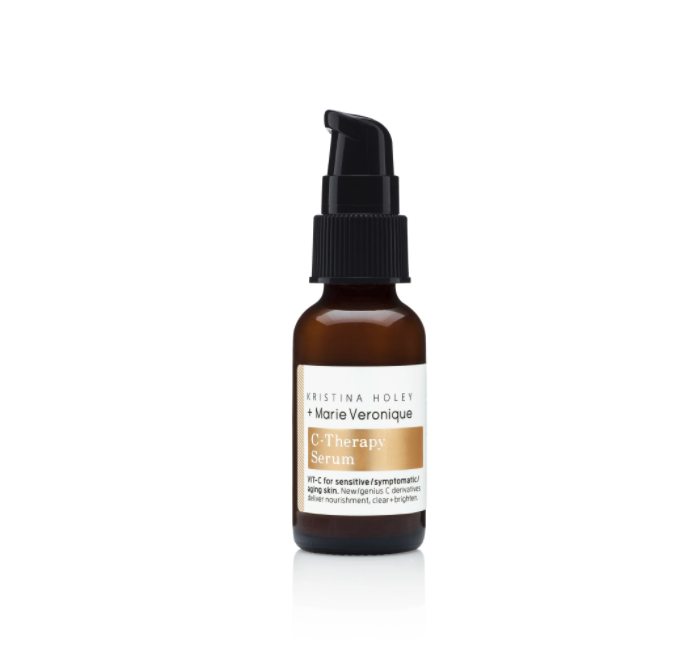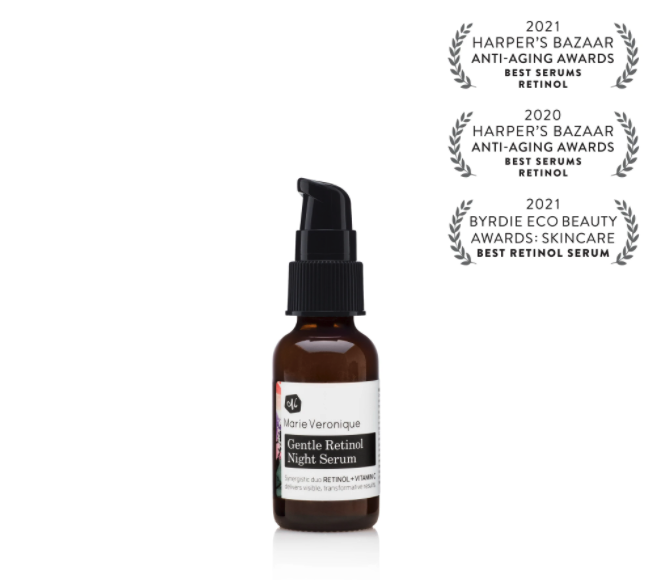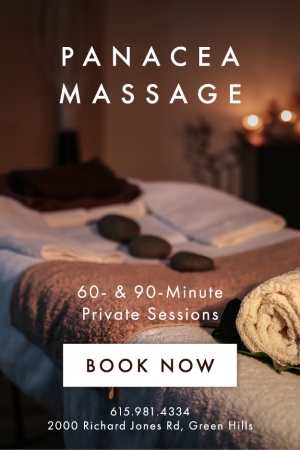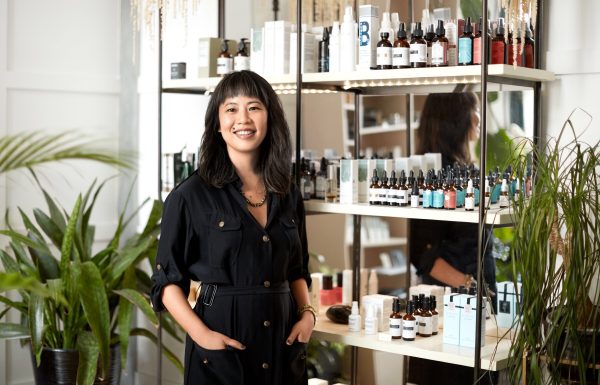In my teens and 20s, I spent hours in the sun and *on occasion* got burned—like the red, blistery kind. So now in my thirties, I’m starting to see more signs of age spots and wrinkles with each passing year.
We know that the sun’s UV rays are the #1 cause for premature aging—or what is more widely referred to as “sun damage”. Obviously, sun protection is truly key to preventing sun damage.
Since time travel is not possible and I can’t tell my 20-year-old self to stay out of the sun, what options are there to reverse the damage? We tapped esthetician, trained chemist, and founder of her namesake brand, Marie Veronique to share two simple ways to slow down those age spots and increase the elasticity in your skin.
Tip 1: Apply Vitamin C Daily
The skin benefits of Vitamin C are numerous: it is required for tissue growth and collagen synthesis, inhibits melanin production, protects against UV damage, and has significant ability to treat photodamaged and wrinkled skin. When it comes to skincare, you can add vitamin C serum to your daily morning or evening skincare routine. However, it will take at least a month to see any difference.
If you do apply it in the morning, it’s recommended to always wear sunscreen. It’s also a perfect Retinol alternative for pregnant women.
Tip 2: Don’t Fear Retinol
How does Retinol reverse aging?
Basically, as we age, the epidermis thickens while the dermis thins. The use of retinoids inverts that aging process, so long-term retinoid users enjoy an epidermis with fewer age spots and wrinkles supported by a lovely thick dermis. Early retinol usage also helps delay the aging process, so the best time to start using retinol is in your early thirties when your cell turnover rate begins to slow. One of the benefits of getting an early start on over-the-counter retinol is that you can hold off on prescription retinoids until your forties or fifties.
What’s the best form of retinoids?
Retinol is what we use in our Gentle Retinol Serum because it’s the soluble form of Vitamin A that your skin converts to retinoic acid as needed, thus avoiding the irritation caused by applying straight-up retinoic acid. Retinol delivers similar results to retinoic acid, but they are slower to appear. The wait is well worth it to those who have sensitive skin or wish to avoid irritation. Because retinol degrades quickly in an acidic medium and when exposed to oxygen, careful label reading is required: look for encapsulated retinol in fairly high concentrations. Anywhere from 0.1% (if the skin is quite sensitive) to 1% is good.
What’s the best way to incorporate Retinols into your routine?
Begin by using your retinoid every other or every third night and work up to every night but be consistent. Make sure you’re using the product only in the evenings to avoid sun exposure. And be patient. This is not an overnight process for anyone, and depending on the type of retinoid you use, the condition you are treating, and the condition of your skin, it could take six to eight weeks before you start to see significant changes. Also, worth noting that the order of application is not important—what matters is that you find the type of retinoid that best suits you, make it a part of your skincare routine, and be consistent in its use. You’ll be very happy you made the effort.








